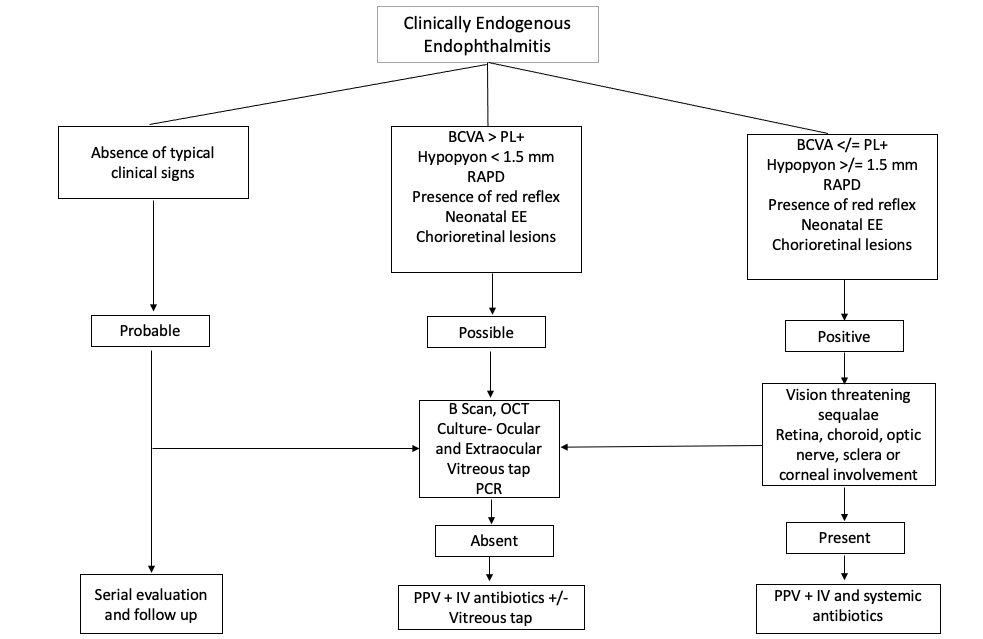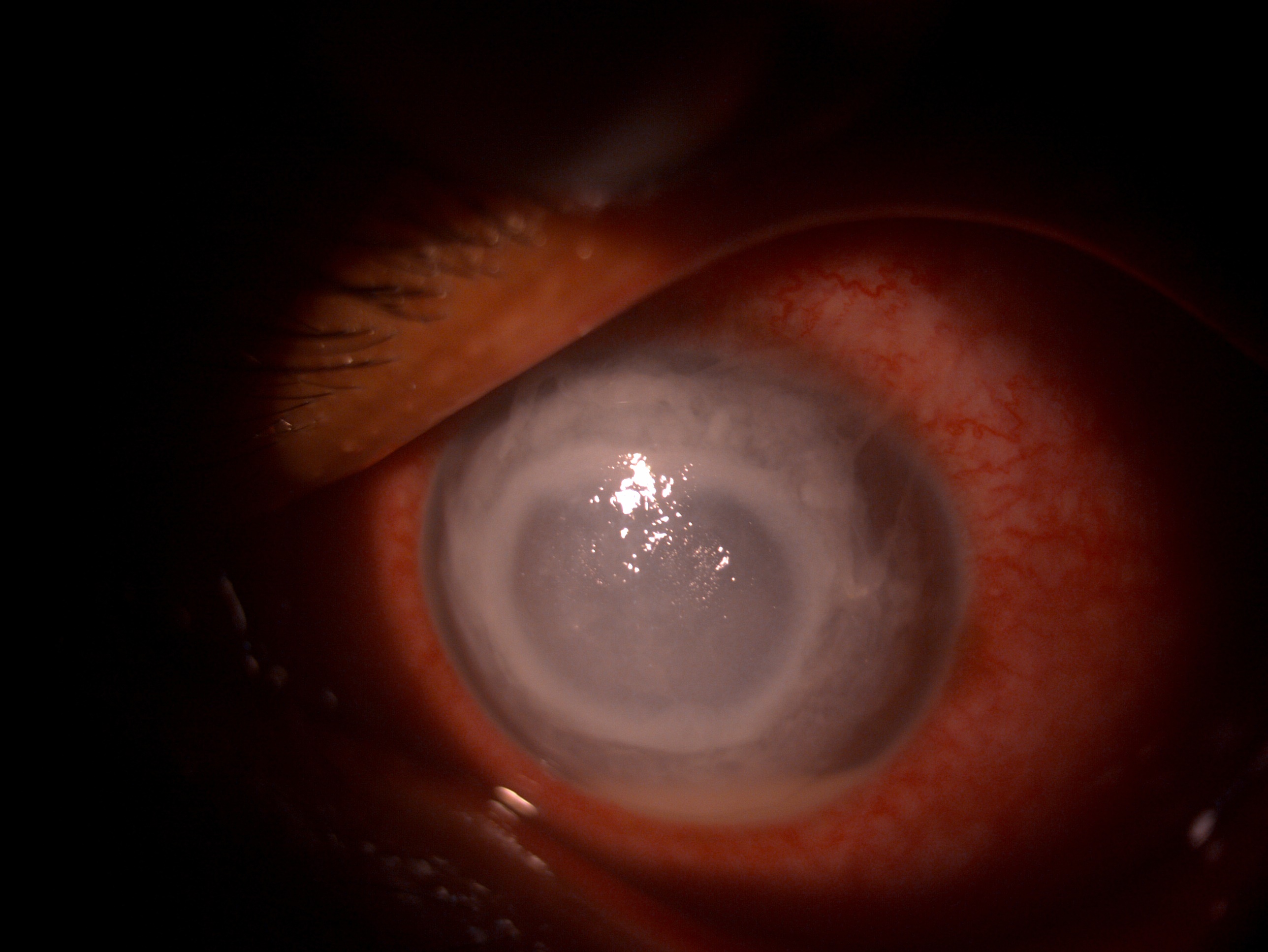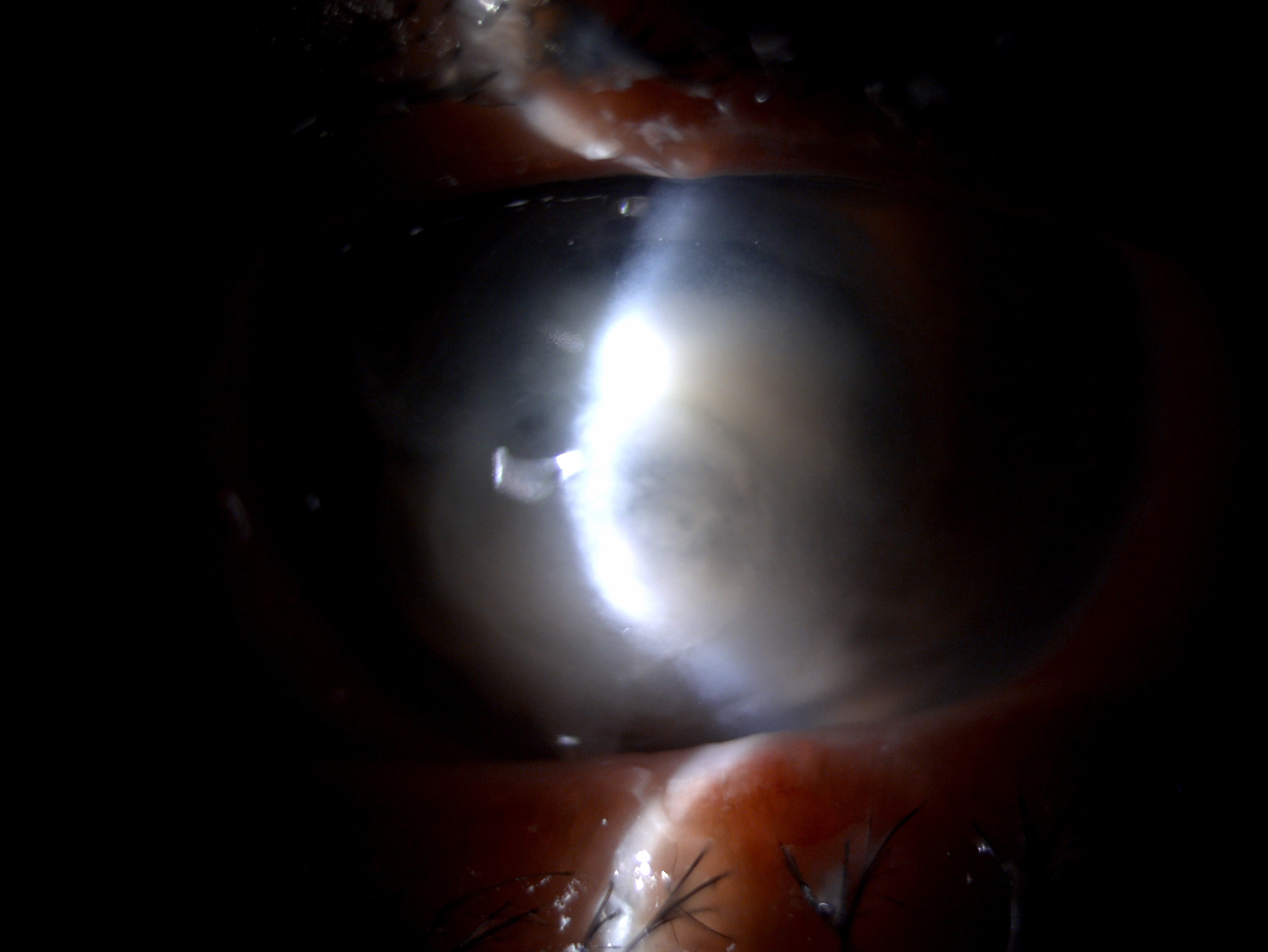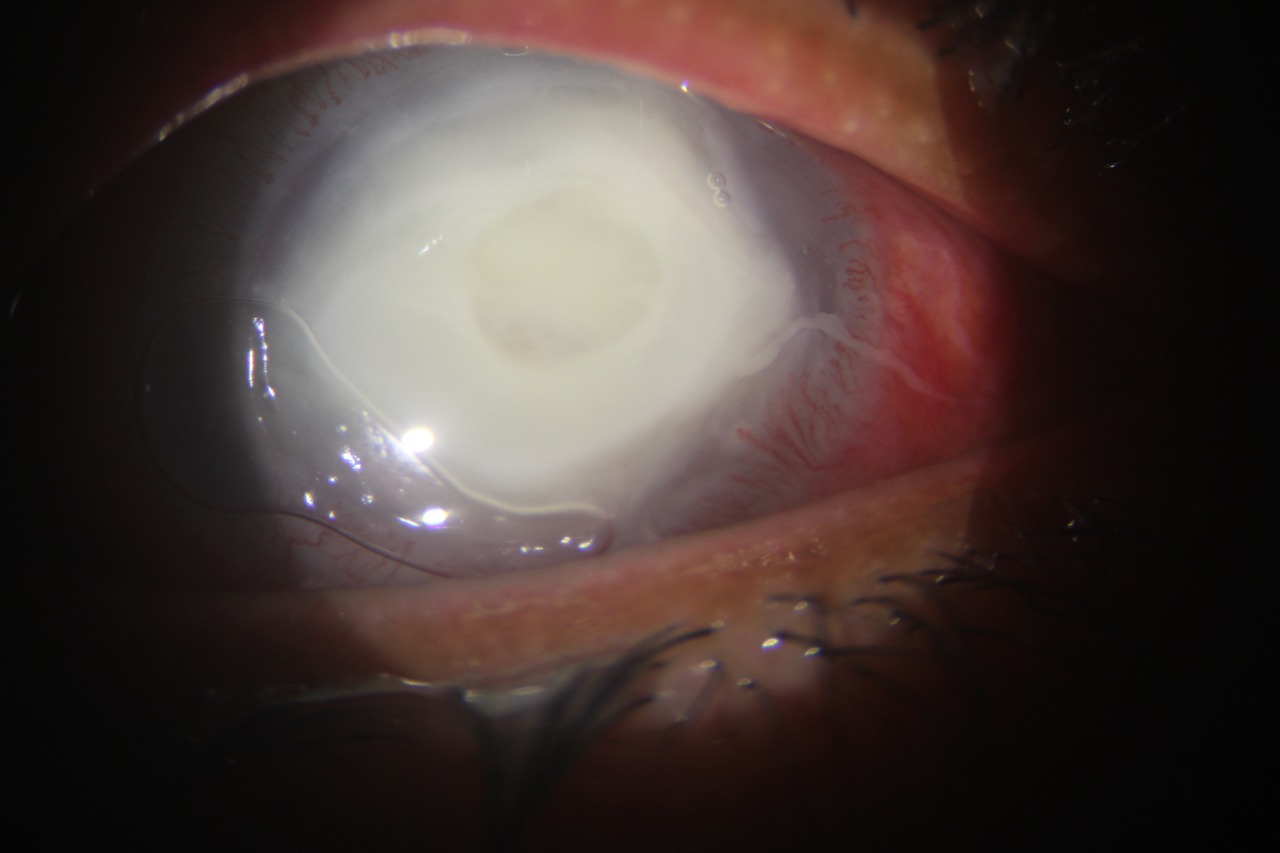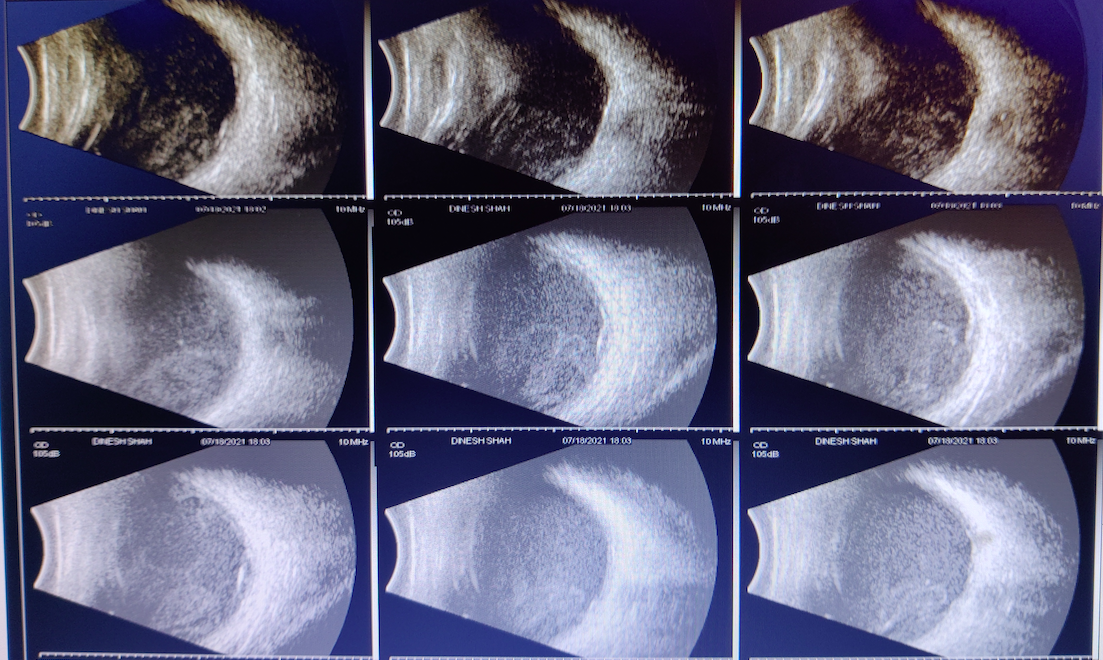[1]
Novosad BD,Callegan MC, Severe bacterial endophthalmitis: towards improving clinical outcomes. Expert review of ophthalmology. 2010 Oct;
[PubMed PMID: 21572565]
Level 2 (mid-level) evidence
[3]
Kernt M,Kampik A, Endophthalmitis: Pathogenesis, clinical presentation, management, and perspectives. Clinical ophthalmology (Auckland, N.Z.). 2010 Mar 24;
[PubMed PMID: 20390032]
Level 3 (low-level) evidence
[4]
Schiedler V,Scott IU,Flynn HW Jr,Davis JL,Benz MS,Miller D, Culture-proven endogenous endophthalmitis: clinical features and visual acuity outcomes. American journal of ophthalmology. 2004 Apr;
[PubMed PMID: 15059712]
[5]
Sharma S,Padhi TR,Basu S,Kar S,Roy A,Das T, Endophthalmitis patients seen in a tertiary eye care centre in Odisha: a clinico-microbiological analysis. The Indian journal of medical research. 2014 Jan;
[PubMed PMID: 24604043]
[6]
Jackson TL,Paraskevopoulos T,Georgalas I, Systematic review of 342 cases of endogenous bacterial endophthalmitis. Survey of ophthalmology. 2014 Nov-Dec;
[PubMed PMID: 25113611]
Level 3 (low-level) evidence
[7]
Sridhar J,Flynn HW Jr,Kuriyan AE,Miller D,Albini T, Endogenous fungal endophthalmitis: risk factors, clinical features, and treatment outcomes in mold and yeast infections. Journal of ophthalmic inflammation and infection. 2013 Sep 20;
[PubMed PMID: 24053550]
[8]
Hu CC,Ho JD,Lou HY,Keller JJ,Lin HC, A one-year follow-up study on the incidence and risk of endophthalmitis after pyogenic liver abscess. Ophthalmology. 2012 Nov;
[PubMed PMID: 22817832]
[9]
Rudež LK,Petrović I,Bulić K,Mandić JJ, A rare case of devastating Clostridium septicum endogenous endophthalmitis. Graefe's archive for clinical and experimental ophthalmology = Albrecht von Graefes Archiv fur klinische und experimentelle Ophthalmologie. 2021 Nov 1;
[PubMed PMID: 34724111]
Level 3 (low-level) evidence
[10]
Yue Q,Zhang Q,Wang Y,He X,Ding K,Wang X,Xi H,Wang L,Zhang Y,Wu C, Complete genome sequencing and comparative analysis of Citrobacter koseri CKNJ, a strain isolated from patient with endogenous endophthalmitis. Japanese journal of infectious diseases. 2021 Aug 31;
[PubMed PMID: 34470967]
Level 2 (mid-level) evidence
[11]
Sahu C,Kumar K,Sinha MK,Venkata A,Majji AB,Jalali S, Review of endogenous endophthalmitis during pregnancy including case series. International ophthalmology. 2013 Oct;
[PubMed PMID: 23263732]
Level 2 (mid-level) evidence
[12]
Moshfeghi AA,Charalel RA,Hernandez-Boussard T,Morton JM,Moshfeghi DM, Declining incidence of neonatal endophthalmitis in the United States. American journal of ophthalmology. 2011 Jan;
[PubMed PMID: 20970776]
[13]
Durand ML, Endophthalmitis. Clinical microbiology and infection : the official publication of the European Society of Clinical Microbiology and Infectious Diseases. 2013 Mar;
[PubMed PMID: 23438028]
[14]
Lamaris GA,Esmaeli B,Chamilos G,Desai A,Chemaly RF,Raad II,Safdar A,Lewis RE,Kontoyiannis DP, Fungal endophthalmitis in a tertiary care cancer center: a review of 23 cases. European journal of clinical microbiology
[PubMed PMID: 18183439]
Level 3 (low-level) evidence
[15]
Keyashian K,Malani PN, Endophthalmitis associated with intravenous drug use. Southern medical journal. 2007 Dec;
[PubMed PMID: 18090965]
[16]
Cheng HH,Ding Y,Wu M,Tang CC,Zhang RJ,Lin XF,Xu JT, Endogenous aspergillus endophthalmitis after kidney transplantation. International journal of ophthalmology. 2011;
[PubMed PMID: 22553722]
[17]
Wu ZH,Chan RP,Luk FO,Liu DT,Chan CK,Lam DS,Lai TY, Review of Clinical Features, Microbiological Spectrum, and Treatment Outcomes of Endogenous Endophthalmitis over an 8-Year Period. Journal of ophthalmology. 2012;
[PubMed PMID: 23533699]
[18]
de Lima LM,Cecchetti SA,Cecchetti DF,Arroyo D,Romão EA,Dantas M,Neto MM, Endophthalmitis: a rare but devastating metastatic bacterial complication of hemodialysis catheter-related sepsis. Renal failure. 2012;
[PubMed PMID: 22017567]
[19]
Noyola DE,Bohra L,Paysse EA,Fernandez M,Coats DK, Association of candidemia and retinopathy of prematurity in very low birthweight infants. Ophthalmology. 2002 Jan;
[PubMed PMID: 11772584]
[20]
Basu S,Kumar A,Kapoor K,Bagri NK,Chandra A, Neonatal endogenous endophthalmitis: a report of six cases. Pediatrics. 2013 Apr;
[PubMed PMID: 23478867]
Level 3 (low-level) evidence
[21]
Bilgic A,Sudhalkar A,Gonzalez-Cortes JH,March de Ribot F,Yogi R,Kodjikian L,Mathis T, ENDOGENOUS ENDOPHTHALMITIS IN THE SETTING OF COVID-19 INFECTION: A Case Series. Retina (Philadelphia, Pa.). 2021 Aug 1;
[PubMed PMID: 33734193]
Level 2 (mid-level) evidence
[22]
Agarwal M,Sachdeva M,Pal S,Shah H,Kumar R M,Banker A, Endogenous Endophthalmitis A Complication of COVID-19 Pandemic: A Case Series. Ocular immunology and inflammation. 2021 May 19;
[PubMed PMID: 34255587]
Level 2 (mid-level) evidence
[23]
Gurnani B,Kaur K, Impact of the COVID-19 pandemic on clinical ophthalmology. The Indian journal of medical research. 2021 Jan
[PubMed PMID: 33473015]
[24]
Tsai AS,Lee SY,Jap AH, An unusual case of recurrent endogenous Klebsiella endophthalmitis. Eye (London, England). 2010 Oct;
[PubMed PMID: 20559330]
Level 3 (low-level) evidence
[25]
Jackson TL,Eykyn SJ,Graham EM,Stanford MR, Endogenous bacterial endophthalmitis: a 17-year prospective series and review of 267 reported cases. Survey of ophthalmology. 2003 Jul-Aug;
[PubMed PMID: 12850229]
Level 3 (low-level) evidence
[26]
Binder MI,Chua J,Kaiser PK,Procop GW,Isada CM, Endogenous endophthalmitis: an 18-year review of culture-positive cases at a tertiary care center. Medicine. 2003 Mar;
[PubMed PMID: 12640186]
Level 3 (low-level) evidence
[27]
Greenwald MJ,Wohl LG,Sell CH, Metastatic bacterial endophthalmitis: a contemporary reappraisal. Survey of ophthalmology. 1986 Sep-Oct;
[PubMed PMID: 3541265]
Level 3 (low-level) evidence
[28]
Samiy N,D'Amico DJ, Endogenous fungal endophthalmitis. International ophthalmology clinics. 1996 Summer;
[PubMed PMID: 8989607]
[29]
Chee SP,Jap A, Endogenous endophthalmitis. Current opinion in ophthalmology. 2001 Dec;
[PubMed PMID: 11734687]
Level 3 (low-level) evidence
[30]
Lingappan A,Wykoff CC,Albini TA,Miller D,Pathengay A,Davis JL,Flynn HW Jr, Endogenous fungal endophthalmitis: causative organisms, management strategies, and visual acuity outcomes. American journal of ophthalmology. 2012 Jan;
[PubMed PMID: 21917234]
[31]
Agarwal M,Biswas J,Mathur U,Sijwali MS,Singh AK, Aspergillus iris granuloma in a young male: a case report with review of literature. Indian journal of ophthalmology. 2007 Jan-Feb;
[PubMed PMID: 17189896]
Level 3 (low-level) evidence
[32]
Oude Lashof AM,Rothova A,Sobel JD,Ruhnke M,Pappas PG,Viscoli C,Schlamm HT,Oborska IT,Rex JH,Kullberg BJ, Ocular manifestations of candidemia. Clinical infectious diseases : an official publication of the Infectious Diseases Society of America. 2011 Aug 1;
[PubMed PMID: 21765074]
[33]
Khan A,Okhravi N,Lightman S, The eye in systemic sepsis. Clinical medicine (London, England). 2002 Sep-Oct;
[PubMed PMID: 12448593]
[34]
Tanaka M,Kobayashi Y,Takebayashi H,Kiyokawa M,Qiu H, Analysis of predisposing clinical and laboratory findings for the development of endogenous fungal endophthalmitis. A retrospective 12-year study of 79 eyes of 46 patients. Retina (Philadelphia, Pa.). 2001;
[PubMed PMID: 11421007]
Level 2 (mid-level) evidence
[35]
Rodrigues IA,Jackson TL, A high-definition view of endogenous fungal endophthalmitis. The Lancet. Infectious diseases. 2014 Apr;
[PubMed PMID: 24670628]
[36]
Cho M,Khanifar AA,Chan RV, Spectral-domain optical coherence tomography of endogenous fungal endophthalmitis. Retinal cases
[PubMed PMID: 25389883]
Level 3 (low-level) evidence
[37]
Palexas GN,Green WR,Goldberg MF,Ding Y, Diagnostic pars plana vitrectomy report of a 21-year retrospective study. Transactions of the American Ophthalmological Society. 1995;
[PubMed PMID: 8719683]
Level 2 (mid-level) evidence
[38]
Sowmya P,Madhavan HN, Diagnostic utility of polymerase chain reaction on intraocular specimens to establish the etiology of infectious endophthalmitis. European journal of ophthalmology. 2009 Sep-Oct;
[PubMed PMID: 19787602]
[39]
Mehta S,Nagvekar V,Gupta G, Utility of 2-Deoxy-2-[18F]fluoro-Dglucose positron emission tomography/computed tomography scan in the systemic evaluation of patients with post-COVID-19 endogenous presumed fungal endophthalmitis. Indian journal of ophthalmology. 2021 Oct;
[PubMed PMID: 34571657]
[40]
Ang M,Jap A,Chee SP, Prognostic factors and outcomes in endogenous Klebsiella pneumoniae endophthalmitis. American journal of ophthalmology. 2011 Feb;
[PubMed PMID: 21168820]
[41]
Yonekawa Y,Chan RV,Reddy AK,Pieroni CG,Lee TC,Lee S, Early intravitreal treatment of endogenous bacterial endophthalmitis. Clinical
[PubMed PMID: 22050564]
[42]
Barza M, Treatment options for candidal endophthalmitis [editoria; comment]. Clinical infectious diseases : an official publication of the Infectious Diseases Society of America. 1998 Nov;
[PubMed PMID: 9827258]
Level 3 (low-level) evidence
[43]
Martínez-Vázquez C,Fernández-Ulloa J,Bordón J,Sopeña B,de la Fuente J,Ocampo A,Rubianes M, Candida albicans endophthalmitis in brown heroin addicts: response to early vitrectomy preceded and followed by antifungal therapy. Clinical infectious diseases : an official publication of the Infectious Diseases Society of America. 1998 Nov;
[PubMed PMID: 9827257]
[44]
Breit SM,Hariprasad SM,Mieler WF,Shah GK,Mills MD,Grand MG, Management of endogenous fungal endophthalmitis with voriconazole and caspofungin. American journal of ophthalmology. 2005 Jan;
[PubMed PMID: 15652837]
[45]
Pappas PG,Kauffman CA,Andes D,Benjamin DK Jr,Calandra TF,Edwards JE Jr,Filler SG,Fisher JF,Kullberg BJ,Ostrosky-Zeichner L,Reboli AC,Rex JH,Walsh TJ,Sobel JD,Infectious Diseases Society of America., Clinical practice guidelines for the management of candidiasis: 2009 update by the Infectious Diseases Society of America. Clinical infectious diseases : an official publication of the Infectious Diseases Society of America. 2009 Mar 1;
[PubMed PMID: 19191635]
Level 1 (high-level) evidence
[46]
Sen P,Gopal L,Sen PR, Intravitreal voriconazole for drug-resistant fungal endophthalmitis: case series. Retina (Philadelphia, Pa.). 2006 Oct;
[PubMed PMID: 17031296]
Level 2 (mid-level) evidence
[47]
Marangon FB,Miller D,Giaconi JA,Alfonso EC, In vitro investigation of voriconazole susceptibility for keratitis and endophthalmitis fungal pathogens. American journal of ophthalmology. 2004 May;
[PubMed PMID: 15126145]
[48]
Jørgensen JS,Prause JU,Kiilgaard JF, Bilateral endogenous Fusarium solani endophthalmitis in a liver-transplanted patient: a case report. Journal of medical case reports. 2014 Mar 24;
[PubMed PMID: 24661421]
Level 3 (low-level) evidence
[49]
Smith SR,Kroll AJ,Lou PL,Ryan EA, Endogenous bacterial and fungal endophthalmitis. International ophthalmology clinics. 2007 Spring;
[PubMed PMID: 17450017]
[50]
Lindstedt EW,Bennebroek CA,van der Werf DJ,Veckeneer M,Norel AO,Nielsen CC,Wubbels RJ,van Dissel JT,van Meurs JC, A prospective multicenter randomized placebo-controlled trial of dexamethasone as an adjuvant in the treatment of postoperative bacterial endophthalmitis: interim safety analysis of the study drug and analysis of overall treatment results. Graefe's archive for clinical and experimental ophthalmology = Albrecht von Graefes Archiv fur klinische und experimentelle Ophthalmologie. 2014 Oct;
[PubMed PMID: 25107542]
Level 1 (high-level) evidence
[51]
Lee S,Um T,Joe SG,Hwang JU,Kim JG,Yoon YH,Lee JY, Changes in the clinical features and prognostic factors of endogenous endophthalmitis: fifteen years of clinical experience in Korea. Retina (Philadelphia, Pa.). 2012 May;
[PubMed PMID: 22105504]
[53]
Gurnani B,Christy J,Narayana S,Rajkumar P,Kaur K,Gubert J, Retrospective multifactorial analysis of {i}Pythium keratitis{/i} and review of literature. Indian journal of ophthalmology. 2021 May;
[PubMed PMID: 33913840]
Level 2 (mid-level) evidence
[54]
Gurnani B,Narayana S,Christy J,Rajkumar P,Kaur K,Gubert J, Successful management of pediatric pythium insidiosum keratitis with cyanoacrylate glue, linezolid, and azithromycin: Rare case report. European journal of ophthalmology. 2021 Mar 28;
[PubMed PMID: 33779337]
Level 3 (low-level) evidence
[55]
Balamurugan S,Das D,Hasanreisoglu M,Toy BC,Akhter M,Anuradha VK,Anthony E,Gurnani B,Kaur K, Interleukins and cytokine biomarkers in uveitis. Indian journal of ophthalmology. 2020 Sep;
[PubMed PMID: 32823391]
[56]
Paulbuddhe V,Addya S,Gurnani B,Singh D,Tripathy K,Chawla R, Sympathetic Ophthalmia: Where Do We Currently Stand on Treatment Strategies? Clinical ophthalmology (Auckland, N.Z.). 2021;
[PubMed PMID: 34707340]
[57]
Itoh M,Ikewaki J,Kimoto K,Itoh Y,Shinoda K,Nakatsuka K, Two Cases of Endogenous Endophthalmitis Caused by Gram-Positive Bacteria with Good Visual Outcome. Case reports in ophthalmology. 2010 Sep 21;
[PubMed PMID: 21103197]
Level 3 (low-level) evidence
[58]
Connell PP,O'Neill EC,Fabinyi D,Islam FM,Buttery R,McCombe M,Essex RW,Roufail E,Clark B,Chiu D,Campbell W,Allen P, Endogenous endophthalmitis: 10-year experience at a tertiary referral centre. Eye (London, England). 2011 Jan;
[PubMed PMID: 20966972]
[59]
Christy J,Jain N,Gurnani B,Kaur K, Twinkling Eye -A Rare Presentation in Neovascular Glaucoma. Journal of glaucoma. 2019 May 23;
[PubMed PMID: 31135586]
[60]
Gurnani B,Kaur K,Gireesh P, Rare Coexistence of Bilateral Congenital Sutural and Cortical Blue Dot Cataracts. Journal of pediatric ophthalmology and strabismus. 2020 Jan 1;
[PubMed PMID: 31972045]
[61]
Balamurugan S,Gurnani B,Kaur K,Gireesh P,Narayana S, Traumatic intralenticular abscess-What is so different? The Indian journal of radiology
[PubMed PMID: 32476758]
[62]
Gurnani B,Kaur K,Sekaran S, First case of coloboma, lens neovascularization, traumatic cataract, and retinal detachment in a young Asian female. Clinical case reports. 2021 Sep;
[PubMed PMID: 34484773]
Level 3 (low-level) evidence
[63]
Lim HW,Shin JW,Cho HY,Kim HK,Kang SW,Song SJ,Yu HG,Oh JR,Kim JS,Moon SW,Chae JB,Park TK,Song Y, Endogenous endophthalmitis in the Korean population: a six-year retrospective study. Retina (Philadelphia, Pa.). 2014 Mar;
[PubMed PMID: 24056527]
Level 2 (mid-level) evidence

